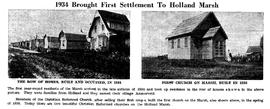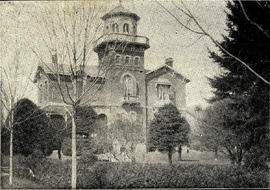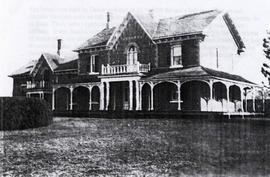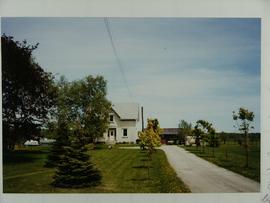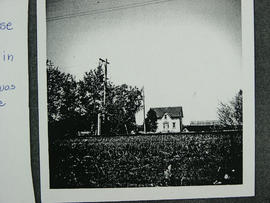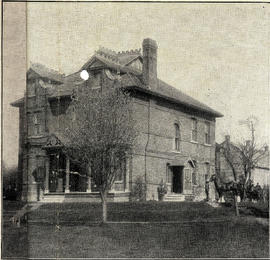Description : William Armson came to West Gwillimbury in 1820, from Nottingham, England. He served in the Britisharmy and had been decorated for outstanding service during the Peninsular Campaign of the Napoleonic Wars. In recognition of his military service, he was granted the 200 acre parcel described as Lot 5, Conc. 7 in West Gwillimbury, on the northwest corner of County Rd. 88 and Sideroad 5. At the farm gate, a Simcoe County Historical Plaque states, "William Armson - elected as the Township's first Councillor in 1843, appointed Warden in 1846, and first elected as Warden of Simcoe County in 1847. He served this position until 1852" - the longest-serving term for a Warden of the County. Armson played a leading role in establishing the County of Simcoe in the 1840s, and was the first Reeve of West Gwillimbury, in 1850. On his death, his son John took over the arm. The south half of the lot was sold to Robert Wood in 1881, and was in possession of the 3rd generation of the Wood family when it was recently sold to developers. The two families - the Armsons and the Woods - had owned this farm for 180 years. While the Armson home is of historical interest because William Armson lived there, it is also of architectural interest. Built in 1843, this farm home is the only two-storey mud block house in Simcoe County, and one of the few remaining mud block houses built in the Township. It was built as a full 2-storey in the prestigious "five over five bay front" style, with end gables and chimneys, and a wing on the rear. It is an excellent example of the impressive homes built in the mid-19th century. As evidenced by the photograph, the exterior - except for the modern window sash - remains largely original. Much of the interior detail is also original, and well-preserved. The remarkable and rare feature is the mud block method of construction. Clay, likely from the farm was mixed with straw in a mud puddle. The mixed mud was placed in moulds, and set out to dry. After baking in the sun, the blocks were removed from the moulds and laid out on boards to dry. This mud block building is and excellent example of the ingenuity of the pioneers in employing local building materials to build their new homes, as they became established in West Gwillimbury. The Armson-Wood house is a building that embodies both local and provincial heritage attributes, and is a wonderful part of the Heritage of Bradford West Gwillimbury.

